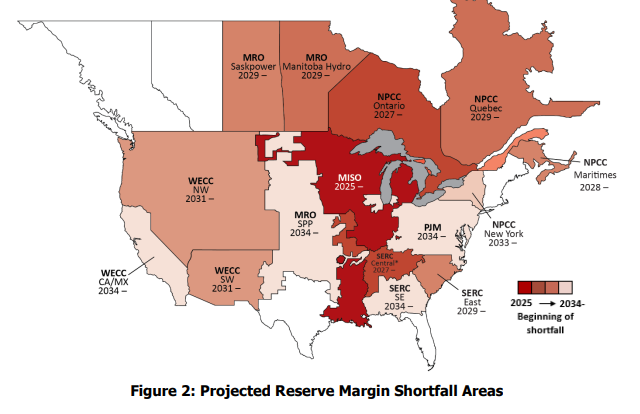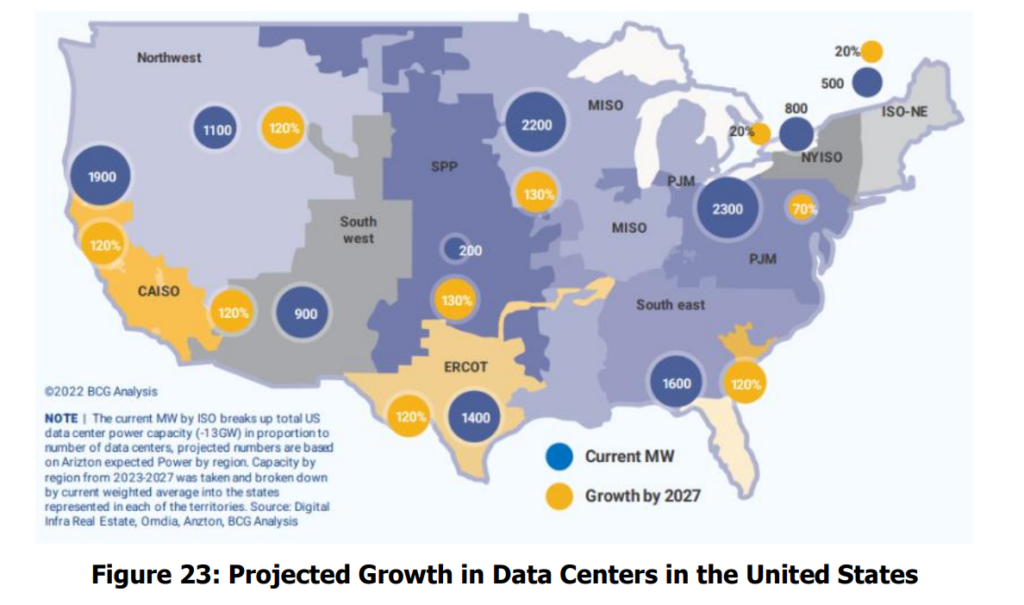- Cryptocurrency and AI are becoming risky energy-intensive
- NERC expresses concern, warning of power supply instability
- Some states are particularly exposed to outages, like Texas
Cryptocurrency mining along with AI training and processing are driving consumption increase electricity demand in the U.S. to unprecedented levels and promises to only increase.
NERC is concerned that this could create power shortages and outages, and threaten the stable operation of critical systems.
More About the NERC Report
Cryptocurrency mining is a set of extremely energy-intensive processes, the main ones being the computation and cooling of computing devices.
The same is true for AI, to an even greater extent, and it just so happens that the peak of their development coincided, showing how the U.S. power grid did not anticipate such a dramatic demand for electricity.
Moreover, the overall energy intensity of each of these areas is one problem, but another is that the demand for cryptocurrencies is driven by market volatility, which creates dramatic loads and highlights the stability problems of the energy infrastructure itself.
The North American Electric Reliability Corporation (NERC) is working to address these issues but warns in advance that it may not be an easy task given the growing and spiking demand.
The problem won’t be uniform across states, as each state is more or less attractive to crypto and AI companies due to several factors, such as regulation and electricity prices. In particular, regions like Texas imply an increase of 4.6% annually through 2029 at peak summer demand, which is four times more than previous projections.

Source: NERC
This is largely because Texas is one of the most favorable in terms of regulation and pricing, which has made it a hub for many crypto and AI companies. Accordingly, the Electric Reliability Council of Texas (ERCOT) is already taking action by enacting new regulations for crypto miners but adds concerns about the increasing risks associated with contracted and non-contract energy loads.

Source: NERC
NERC states the need for proactive measures to prevent gaps in critical systems and suggests expanded demand-side management (DSM) programs as one strategy.
Conclusion
The U.S. power grid was designed at a time when technologies like AI were pure science fiction, and no one understood the true requirements of real-world developments and applications.
Of course, power grids have also evolved, but they have not been rebuilt from scratch to meet the demand for cryptocurrencies, so NERC’s concerns may be very reasonable and timely.
The information provided in this article is for informational and educational purposes only and does not constitute financial, investment, or trading advice. Any actions you take based on the information provided are solely at your own risk. We are not responsible for any financial losses, damages, or consequences resulting from your use of this content. Always conduct your own research and consult a qualified financial advisor before making any investment decisions. Read more







